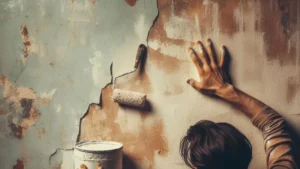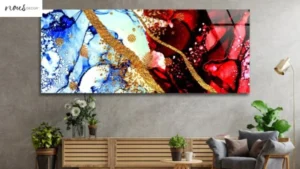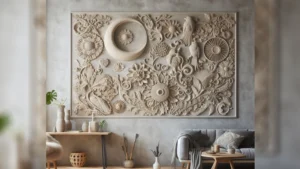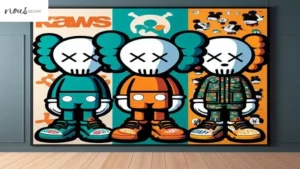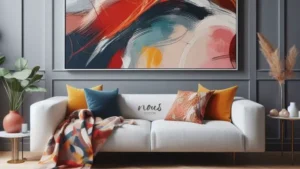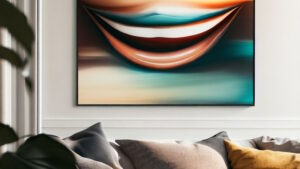As someone who has spent over a decade in the home decor industry, I know that wall art can make or break the look of a room. After helping countless clients find the perfect pieces to liven up their blank walls, I decided it was time to launch my own Decor Wall Art Website.
Through trial and error, while building my business, I’ve learned crucial tips for creating a user-friendly e-commerce platform that also ranks highly in search engines. From optimizing product pages to crafting compelling product descriptions, every detail matters when it comes to driving traffic and sales.
In this Nousdecor article, I’ll share what I’ve gained from my hands-on experience operating a successful wall art webpage. Whether you’re starting from scratch or looking to improve an existing site, these best practices will help you attract more visitors and convince them to purchase once they arrive.
Key Takeaways of Setting Up a Decor Wall Art Website
- Optimize product titles and descriptions for keywords
- Set up intuitive webpage navigation and categories
- Curate visually appealing collections and themes
- Improve page speed through image compression and caching
- Include detailed FAQs and policies to build trust
- Focus on quality photography, pricing, and customer service

Craft SEO-Optimized Product Titles
Product titles are vital for on-page SEO, so take time crafting titles optimized with your target keywords. Include the artwork type, subject matter, colors, size, and any other descriptive details searchers may use.
For example: “24×36 Canvas Wall Art Print of Sunflowers in a Vase”.
When including the piece dimensions, put the larger number first (width before height) as search engines may truncate titles. Other helpful SEO tips for product titles:
- Use keyword-rich titles, but avoid overstuffing with keywords
- Keep titles under 60 characters
- Use compelling wording to entice clicks
By optimizing product titles for keywords, you can improve rankings for decor wall art searches.
Write Detailed Product Descriptions
Well-written product descriptions can boost sales conversions while also helping product pages rank in search engines. The key is writing detailed yet scannable descriptions that paint a picture of the wall art for shoppers.
In each description, touch on:
- Art subject and style
- Materials used and finishing techniques
- Dimensions, including frame/ canvas depth
- Colors and tones
- Artist bio and inspiration behind the piece
- Ideal room placement and style pairings
- Shipping policies and satisfaction guarantees
Use descriptive terms searchers may use like “floral still life painting in soft pastel tones”. Break up text with bullet points and bold keywords to improve scannability.
Compelling descriptions build trust in the quality of wall art while also helping search engines understand the products.

Optimize Webpage Navigation
Make it easy for visitors to find and browse wall art by setting up intuitive webpage navigation and categories. Organize products using common decor wall art themes like:
- Style: abstract, modern, traditional, floral, landscape, black and white, photography
- Room: living room, bedroom, dining room, office, nursery
- Art Type: canvas prints, framed prints, unframed posters, photography, original paintings, mixed media
- Subject: botanicals, animals, landscapes, abstract, quotes, pop culture
Use descriptive category names and include 2-5 subcategories for simplified browsing. Ensure category and subcategory pages are well-optimized with titles, headings, and copy.
Optimized navigation allows shoppers to easily discover your wall art prints and zero in on their style.
Curate Eye-Catching Collections
Creatively curated collections are an excellent e-commerce strategy for decor wall art sites. Collections allow you to tell a story around certain artwork themes and styles. For example, create a “Boho Chic Gallery Walls” collection showcasing related prints that work seamlessly together.
Other engaging collection ideas include:
- Black & White Botanical Prints
- Vintage NYC Photography Series
- Minimalist Quote Canvas Art
- Large-Scale Abstracts for Bold Accent Walls
- Western metal wall art decor
- Contemporary dining room wall art
- Canvas art with birch tree motif
- Welcome-themed wall decorations for homes
- Handpicked wall art decor for your residence
On collection pages, use cohesive imagery, descriptive titles/copy, and strong calls to action. Curated collections help shoppers visualize pieces in lifestyle settings.
Optimize Artwork Page Speed
With large image files, wall art decor webpages can suffer from slow page load times if not properly optimized. Speed up your product pages with these tips:
- Compress Images: Use a tool like TinyPNG to compress artwork files.
- Optimize Code: Minify HTML, CSS, and JS and remove unnecessary code.
- Leverage Browser Caching: Set expiry times for assets to improve caching.
- Lazy Load: Only load images/files as needed.
- CDN: Use a content delivery network to serve assets faster.
Faster page speeds improve visitor experience and help pages rank better – core goals for any decor wall art e-commerce site.
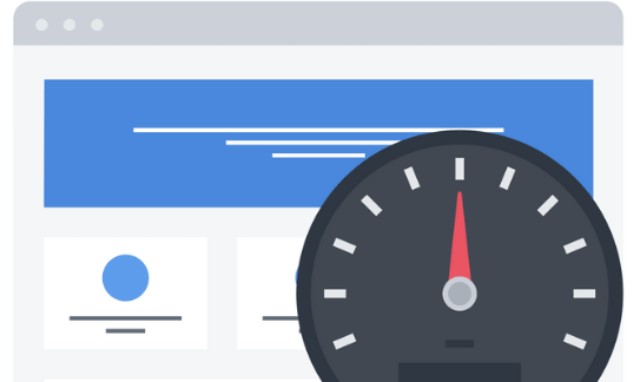
Frequently Asked Questions
Conclusion
Launching an eye-catching and user-friendly wall art webpage takes effort, but pays off through increased traffic, stronger conversions, and repeat business.
By focusing on optimizing navigation, curating collections, speeding up pages, and showcasing inventory attractively, you provide a stellar experience for shoppers.
With a well-executed platform and inventory, you can turn blank walls into breathtaking focal points.

